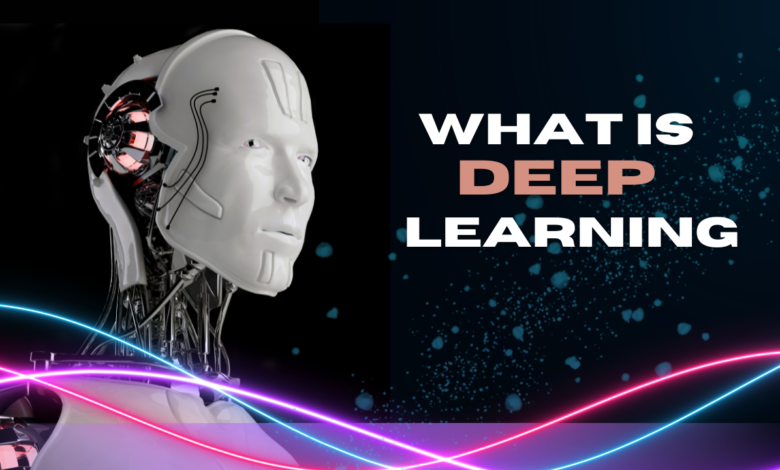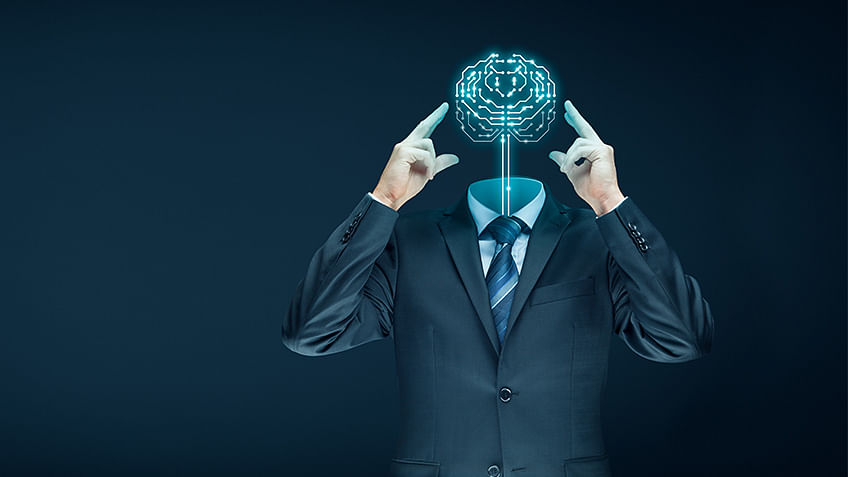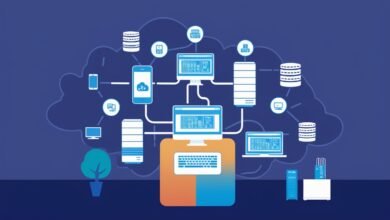What is deep learning

What is deep learning?
Learn about deep learning, its importance in AI, how it works, and its transformative applications across various industries.
Introduction:
Deep learning is at the forefront of artificial intelligence (AI), driving advancements that were once the stuff of science fiction. This powerful subset of machine learning uses neural networks with many layers to analyze complex data patterns. By mimicking the human brain’s structure and function, deep learning enables machines to learn, reason, and make decisions with unprecedented accuracy and efficiency. This article delves into deep learning, its significance, and its transformative impact on various industries.
What is Deep Learning?
Deep learning is a branch of machine learning that leverages artificial neural networks with multiple layers to model and understand complex patterns and relationships within data. Unlike traditional machine learning, which requires manual feature extraction, deep learning can automatically discover the representations needed for detection or classification from raw data.
The Evolution of Deep Learning:
- Early Beginnings:
The concept of neural networks dates back to the 1940s when the McCulloch-Pitts neuron model was introduced. These early models laid the foundation for future advancements, but they were limited by computational power and theoretical understanding. - The AI Winter:
The hype around AI and neural networks led to overpromising and underdelivering, resulting in periods known as AI winters. During these times, research funding and interest in AI drastically declined. - Resurgence and Modern Era:
The resurgence of deep learning in the 2000s was fueled by increased computational power, availability of large datasets, and algorithm advancements. Key milestones include the development of convolutional neural networks (CNNs) and the success of deep learning models in image and speech recognition tasks. - Neural Networks:
Neural networks are the backbone of deep learning. They consist of layers of interconnected nodes (neurons), each performing simple computations. These layers are categorized into input, hidden, and output layers.
Layers and Architectures:
- Input Layer:
The input layer receives raw data, such as images, text, or any other form of data. - Hidden Layers:
Hidden layers perform complex transformations on the data through weighted connections and activation functions. These layers enable the network to learn intricate patterns. - Output Layer:
The output layer produces the final prediction or classification.
Training Deep Learning Models:
- Data Preparation:
Training a deep learning model begins with preparing and preprocessing a large dataset to ensure consistency and quality. - Forward and Backward Propagation:
During training, the model performs forward propagation to make predictions and backward propagation to adjust weights based on errors, minimizing the loss function. - Optimization Techniques:
Optimization algorithms like stochastic gradient descent (SGD) and Adam are used to update model parameters efficiently. - Activation Functions:
Activation functions introduce non-linearity into the network, enabling it to learn complex relationships. Common activation functions include ReLU, Sigmoid, and Tanh.

Applications of Deep Learning:
- Image Recognition:
Deep learning models excel at image recognition tasks, powering applications such as facial recognition, medical imaging, and autonomous vehicles. - Object Detection:
Object detection algorithms can identify and locate multiple objects within an image, which is essential for surveillance and robotics applications.
Natural Language Processing (NLP):
Sentiment Analysis:
Deep learning models can analyze text to determine sentiment, which is helpful for customer feedback and social media monitoring.
Machine Translation:
Models like Google Translate use deep learning to provide accurate and context-aware translations between languages.
Healthcare
- Disease Diagnosis:
Deep learning aids in diagnosing diseases by analyzing medical images, predicting patient outcomes, and recommending treatments. - Drug Discovery:
Deep learning accelerates drug discovery by predicting molecular behavior and potential therapeutic effects.
Finance
- Fraud Detection:
Financial institutions use deep learning to detect real-time fraudulent transactions and anomalies. - Algorithmic Trading:
Deep learning models analyze market data to make high-frequency trading decisions. - Autonomous Vehicles:
Deep learning is crucial for developing self-driving cars, enabling them to interpret sensor data, navigate, and make real-time decisions.
Challenges and Limitations:
- Data Requirements:
Deep learning models require vast amounts of labeled data, which can be expensive and time-consuming. - Computational Resources:
Training deep learning models demands significant computational power and memory, often necessitating specialized hardware like GPUs. - Interpretability:
Deep learning models are often considered “black boxes” due to their complexity, making it difficult to understand how they make decisions. - Overfitting:
Overfitting occurs when a model performs well on training data but poorly on new, unseen data. Techniques like dropout and regularization help mitigate this issue.
Future Trends in Deep Learning:
- Explainable AI (XAI):
Efforts are underway to make deep learning models more interpretable and transparent, fostering trust and adoption in critical applications. - Transfer Learning:
Transfer learning allows models to leverage knowledge from pre-trained models, reducing the need for large datasets and speeding up training. - Edge Computing:
Deploying deep learning models on edge devices like smartphones and IoT devices enables real-time processing and reduces latency. - Ethical Considerations:
As deep learning becomes more pervasive, addressing ethical concerns like bias, privacy, and accountability is crucial.

Conclusion:
Deep learning represents a significant leap forward in artificial intelligence, offering powerful tools to solve complex problems across various domains. Its ability to learn from vast amounts of data and make highly accurate predictions has already transformed industries such as healthcare, finance, and transportation. As research and technology advance, deep learning is poised to unlock even more significant potential, driving innovation and improving our daily lives.
FAQ’s
What is the difference between deep learning and machine learning?
Machine learning encompasses a broad range of algorithms that enable computers to learn from data. Deep learning is a subset of machine learning that uses neural networks with many layers to analyze complex data patterns.
Why is deep learning meaningful?
Deep learning is meaningful because it enables the development of AI systems that can perform tasks with high accuracy, such as image recognition, natural language processing, and autonomous driving, often surpassing human performance.
What are neural networks?
Neural networks are computational models inspired by the human brain’s structure and function. They consist of interconnected nodes (neurons) organized in layers, allowing them to learn and make decisions from data.
How does deep learning handle large datasets?
Deep learning models handle large datasets through parallel processing on powerful hardware like GPUs. Techniques like mini-batch gradient descent and distributed training further enhance their ability to process vast data.
What are some typical applications of deep learning?
Typical deep learning applications include image and speech recognition, natural language processing, healthcare diagnostics, autonomous vehicles, and financial analysis.
What are the limitations of deep learning?
Deep learning’s limitations include the need for large labeled datasets, high computational requirements, difficulty interpreting model decisions, and potential overfitting to training data.




